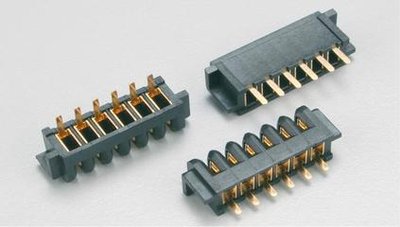source:pogo pin release time:2022-11-15 Article author:yu Popular:POGO PIN

When it comes to the design of RF coaxial connectors, it is estimated that many foreign trade practitioners will feel at a loss, because under normal circumstances, we are in contact with products, and have not thought about its design problems, then the design principles of RF coaxial connectors What is it?
As the saying goes, there are no rules and no squares. No matter where it is, there are some basic points that need people to pay attention to. The same is true for the design of RF connectors. The working principle of the radio frequency connector is relatively simple, that is, a coaxial transmission line that can realize electrical connection and separation in the rf transmission system.
The realization of the mechanical process of connection and separation requires the connector to have a reliable connection interface; the applicability and convenience of the connector require that the connection interface has a variety of different specifications and connection forms; the versatility and interchangeability of the connector require connection The standardization of the interface; the reliability and stability of connection and separation require the stability of the connector interface size and the relative position of the inner and outer conductors and sufficient mechanical retention. This is the basic requirement for the interface and structure of the connector. On the other hand, the connector needs to be connected with transmission lines such as coaxial cables and microstrips. It also needs to consider the matching, stability and connection reliability of the connection transition.
Technical personnel believe that the stability and reliability of the mechanical connection is the basis for realizing the reliability and stability of the electrical connection of the radio frequency coaxial connector. A stable and reliable mechanical structure plus uniformly matched impedance and reasonable dielectric materials can obtain electrical RF coaxial connector with excellent performance.
At the same time, the technician should point out that impedance discontinuity is unavoidable: the mechanical connection of the interface and the tolerance of the interface cause the impedance of the connection interface to be discontinuous; the step positioning structure used to ensure mechanical stability leads to the existence of discontinuous capacitance; The drift of mechanical tolerances and dielectric parameters leads to the drift of characteristic impedance; the adaptability of the connection part of the connector and the cable and microstrip radio frequency transmission line and the change of the electromagnetic field will also cause the characteristic impedance to be discontinuous. Only by identifying and compensating for these discontinuities, can the radio frequency coaxial connector have better electrical performance indicators.
There are many theoretical books and academic papers for the design and compensation calculation of RF coaxial connectors. There are more detailed and comprehensive introductions in the design of RF coaxial connectors. Desso Hardware’s ideas are not discussed here, but most of the empirical formulas need to be explained. They are all obtained through the research of large-size coaxial transmission lines. For the design of connectors that are usually used at a lower frequency, the accuracy can be completely dealt with, but for small-size, high-frequency, and high-performance connections In terms of the design of the connector (such as millimeter wave connector), the influence of dimensional tolerance, surface roughness, surface resistivity of metal materials and the stability of dielectric parameters has become non-negligible, so the results obtained here are only a reference .
Read recommendations:
What are the disadvantages of pogo pin for shrapnel microneedle module
What should be paid attention to when using pogo pin spring thimble connector?pogopin manufacturer